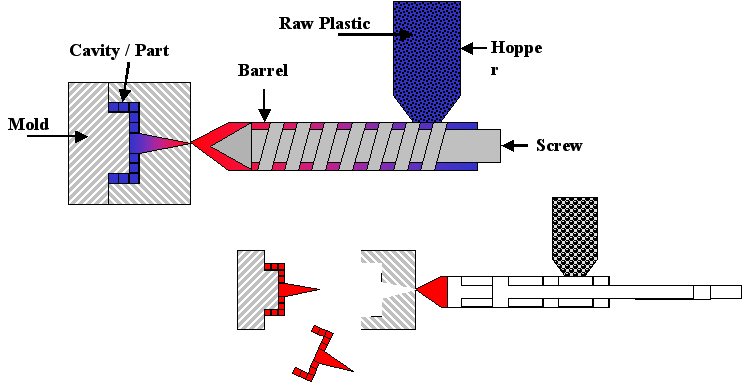|
a. What is Injection Molding?
Injection Molding is the technique of injecting molten plastic into a cold
mold and forming a part. A schematic of the main elements of a molding machine
are shown below. It consists of a hopper that holds the raw plastic pellets.
The hopper feeds the barrel with the plastic. The plastic is melted in the
barrel and with the help of the screw (piston) is injected into a mold. The
mold being colder than the plastic rapidly cools and solidifies the plastic.
The mold is then opened and the part is ejected out of the mold.

b. What is the importance of melt viscosity in
Injection Molding?
During Injection Molding, the material is subjected to large amount of
shear forces during the cavity filling stage. The shear rate is proportional to
the injection speed. If the shear rates are in the non-Newtonian region of the
curve, then small variations in the shear rate will cause a large shift in the
viscosity. This will make the mold filling inconsistent resulting in shot to
shot inconsistency. It is therefore important to find the Newtonian region of
the curve and set the injection speed (therefore shear rate) in this region.
The viscosity curve can be generated at the molding machine for any given mold.
The term ‘In-Mold Rheology’ is another term used for developing the viscosity
curve. The effect of shear rate on viscosity is far greater than that of
temperature. Therefore as long as the actual melt temperature is in the within
the recommended range you will get a similar profile during the development.

|